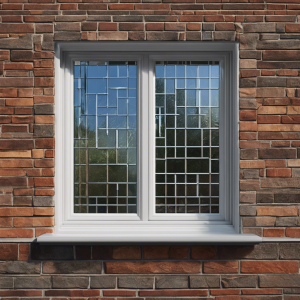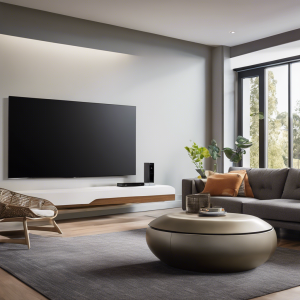Imagine trying to navigate a dark forest without a flashlight. Just like in that scenario, ensuring your home is safe and accessible is essential for individuals with disabilities.
From preventing falls to preparing for emergencies, there are crucial steps you can take to create a secure living environment.
Explore key strategies that can make a significant difference in your daily life and provide peace of mind for you and your loved ones.
Home Safety Assessment
When assessing the safety of your home, it's essential to consider potential hazards that may pose risks to individuals with disabilities. One crucial aspect to focus on is ensuring that the layout of your home accommodates mobility aids effectively. It's vital to have clear pathways that are wide enough for wheelchairs or walkers to move through easily. Consider removing any obstacles that could obstruct movement, such as loose rugs or furniture that's placed haphazardly. By creating a more open and accessible space, you can enhance both safety and independence within your home.
Fall prevention is another key element in promoting home safety for individuals with disabilities. Install grab bars in strategic locations like bathrooms and stairways to provide support and stability. Additionally, ensure that all rugs are secured to the floor to prevent slipping hazards. Consider adding non-slip mats in areas prone to moisture, like the kitchen or bathroom. Adequate lighting is also crucial to help individuals with disabilities navigate their surroundings safely. Make sure that all areas of your home are well-lit to prevent trips and falls.
Lighting and Visibility
To ensure optimal safety within your home, prioritize adequate lighting and visibility in all areas to help individuals with disabilities navigate their surroundings safely. Proper lighting is crucial for nighttime navigation and reducing the risk of accidents. Additionally, glare reduction plays a significant role in creating a comfortable and accessible living environment for individuals with disabilities.
| Lighting Tips | Benefits |
|---|---|
| Install motion sensor lights | Enhances nighttime navigation |
| Use adjustable lighting | Helps in glare reduction |
| Ensure even lighting | Improves visibility and safety |
Installing motion sensor lights near entryways, hallways, and stairs can greatly assist in navigating your home during the night. These lights automatically turn on when they detect movement, providing illumination exactly where and when you need it. Furthermore, using adjustable lighting fixtures allows you to customize the brightness levels based on your specific needs, aiding in glare reduction which is essential for those with visual sensitivities. Ensuring even lighting throughout your home can help prevent shadows and dark spots that may hinder visibility. By implementing these lighting strategies, you can create a safer and more accessible living space for individuals with disabilities.
Accessibility Considerations
Considering accessibility in your home design involves thoughtful planning and conscious effort to ensure a safe and inclusive environment for individuals with disabilities. When designing for accessibility, it's crucial to consider the use of mobility aids. Incorporating features like wider doorways to accommodate wheelchairs, ramps for easy access, and grab bars for stability can greatly enhance the overall accessibility of your home. These modifications not only promote independence but also create a more welcoming space for everyone.
Universal design principles play a significant role in making your home accessible to individuals with disabilities. By implementing features that are usable by people of all abilities, you can create a space that's functional and inclusive. For instance, lever-style door handles are easier to operate for individuals with limited hand dexterity compared to traditional doorknobs. Similarly, installing adjustable countertops in the kitchen allows individuals of varying heights or those using wheelchairs to comfortably prepare meals.
Incorporating accessibility considerations into your home design not only benefits individuals with disabilities but also enhances the overall safety and usability of your living space. By embracing universal design and integrating features that cater to mobility aids, you can create a home that's welcoming, safe, and inclusive for all.
Bathroom Modifications
Incorporating bathroom modifications in your home design is crucial for enhancing accessibility and safety for individuals with disabilities. Two key elements to consider are grab bars and slip-resistant mats.
Grab bars are essential in the bathroom to provide stability and support. Installing grab bars near the toilet, shower, and bathtub can assist individuals with disabilities in maneuvering safely. These bars come in various sizes and styles to suit different needs and preferences. Make sure they're securely mounted to withstand weight and pressure.
Slip-resistant mats are another important addition to prevent falls in the bathroom. These mats provide traction on wet surfaces, reducing the risk of slipping. Place them strategically near the shower or bathtub to create a secure footing area. Choose mats that are easy to clean and maintain for convenience.
When implementing these modifications, ensure that the bathroom layout allows for easy navigation and sufficient space for maneuvering mobility aids. Consider the height of fixtures like sinks and countertops to accommodate wheelchair users comfortably. By making these adjustments, you can create a safer and more accessible bathroom environment for individuals with disabilities.
Kitchen Safety Measures
Ensuring kitchen safety for individuals with disabilities involves implementing practical measures to prevent accidents and promote independence. One key aspect is appliance placement. Consider placing frequently used appliances within easy reach to avoid straining or overreaching. Lowering countertop microwaves or installing side-opening ovens can make handling hot dishes safer. Additionally, organizing kitchen tools and ingredients in a logical layout can enhance accessibility and efficiency.
Cooking adaptations are another crucial component of kitchen safety. Opt for tools like easy-grip utensils, one-handed cutting boards, or electric jar openers to simplify meal preparation. Stovetop safety is paramount, so installing automatic shut-off devices or using induction cooktops that remain cool to the touch can prevent burns or fires. Moreover, labeling food items clearly and using color-coded systems can aid individuals with visual impairments in identifying ingredients and expiration dates accurately.
Incorporating these kitchen safety measures not only reduces the risk of accidents but also fosters a sense of autonomy and empowerment. By customizing the kitchen environment to suit specific needs, individuals with disabilities can navigate the space with confidence and ease. Remember, a few simple adjustments can go a long way in creating a safe and inclusive kitchen for everyone.
Emergency Preparedness Plan
To prepare for emergencies, it's important to develop a comprehensive plan tailored to your specific needs and abilities. When creating your emergency preparedness plan as a person with disabilities, consider the following key aspects:
- Communication strategies: Establish clear communication methods with family members, caregivers, or neighbors in case of an emergency. Utilize text messages, communication apps, or a designated meeting point for effective communication.
- Evacuation routes: Identify accessible evacuation routes both inside your home and in your neighborhood. Practice using these routes regularly to ensure familiarity and confidence during an emergency.
- Emergency kit: Prepare an emergency kit tailored to your specific needs, including essential items like medications, medical supplies, copies of important documents, and assistive devices such as hearing aids or mobility aids.
- Medical supplies: Ensure an ample supply of necessary medical items in your emergency kit, such as insulin, inhalers, catheters, or any other specialized equipment you may require. Regularly check and rotate these supplies to maintain their freshness and effectiveness.
Assistive Technology Integration
When dealing with emergency preparedness as a person with disabilities, considering the integration of assistive technology becomes vital for enhancing your safety and independence. Thanks to technology advancements, there are now user-friendly solutions that cater specifically to individuals with disabilities, providing a sense of security and autonomy within their living spaces. Smart home integration has revolutionized the concept of independent living, offering a wide range of tools and devices that can be controlled remotely or through voice commands, making daily tasks more manageable.
To help you understand better, here is a table illustrating some common assistive technology solutions for home safety:
| Assistive Technology | Functionality |
|---|---|
| Smart Home Security Systems | Monitors and alerts for unusual activities at home |
| Automatic Door Openers | Enables easy access in and out of rooms |
| Voice-Activated Assistants | Controls various devices through voice commands |
| Fall Detection Sensors | Alerts caregivers or emergency services in case of a fall |
Integrating these technologies into your home can provide peace of mind and a greater sense of control over your environment. By embracing these user-friendly solutions, you can enhance your safety, promote independence, and enjoy a more comfortable living experience.
Outdoor Living Spaces
Creating a welcoming and accessible outdoor space is essential for individuals with disabilities to enjoy the benefits of nature and fresh air. When designing your outdoor living area, consider the following tips to ensure it's safe and accommodating:
- Outdoor Accessibility: Ensure pathways are wide enough for mobility aids like wheelchairs or walkers. Consider installing ramps with non-slip surfaces to provide easy access to different areas of the outdoor space.
- Mobility Solutions: Incorporate features like handrails along pathways or steps to offer support and stability. Raised garden beds and adjustable height tables can also make it easier to engage in gardening or outdoor activities.
- Patio Safety: Choose slip-resistant flooring materials for patios to prevent falls. Make sure furniture is arranged to allow for easy navigation and consider adding shade options for comfort during hot weather.
- Garden Adaptations: Opt for raised flower beds or vertical gardens to minimize bending or kneeling. Use adaptive tools like long-handled garden tools or ergonomic grips to make gardening tasks more manageable for individuals with disabilities.
Frequently Asked Questions
How Can Individuals With Disabilities Access Financial Assistance or Grants for Home Safety Modifications?
If you're looking for financial help to make your home safer and more accessible, there are various funding options and assistance programs available. These resources can provide support for accessibility solutions and safety equipment.
Are There Any Specific Regulations or Guidelines for Installing Grab Bars in the Home for Individuals With Disabilities?
When installing grab bars in your home for safety, it's crucial to follow ADA compliance and safety standards. These modifications can greatly improve accessibility and independence for individuals with disabilities. Ensuring proper installation not only enhances daily living but also prevents accidents.
What Are Some Tips for Preventing Falls and Injuries for Individuals With Disabilities Living at Home?
To prevent falls and injuries at home, consider using assistive technology like grab bars and mobility aids. Keep your living space organized and clutter-free for easier navigation.
Create clear pathways and ensure good lighting throughout your home. Install handrails and ramps where needed.
Regularly check for potential hazards and make necessary adjustments to improve your safety. Your well-being is a top priority, so take proactive steps to minimize risks and promote independence.
Are There Any Resources Available for Individuals With Disabilities to Find Reliable Contractors for Home Modifications?
Looking for reliable contractors for home modifications? You're in luck! Online platforms like Angie's List offer contractor recommendations with home modification reviews.
Community forums can also be a goldmine for finding trusted professionals. Don't hesitate to tap into these resources to make your home safer and more accessible.
Your peace of mind matters, and these tools can help you find the right support for your needs.
How Can Individuals With Disabilities Create a Support System for Emergency Situations in Their Home?
In creating a support system for emergency situations in your home, it's vital to focus on emergency preparedness and community networks.
Utilize assistive technology and communication strategies to enhance safety.
Build relationships with neighbors, family, and local organizations for additional support.
Establish a clear emergency plan and ensure it's accessible to everyone involved.



